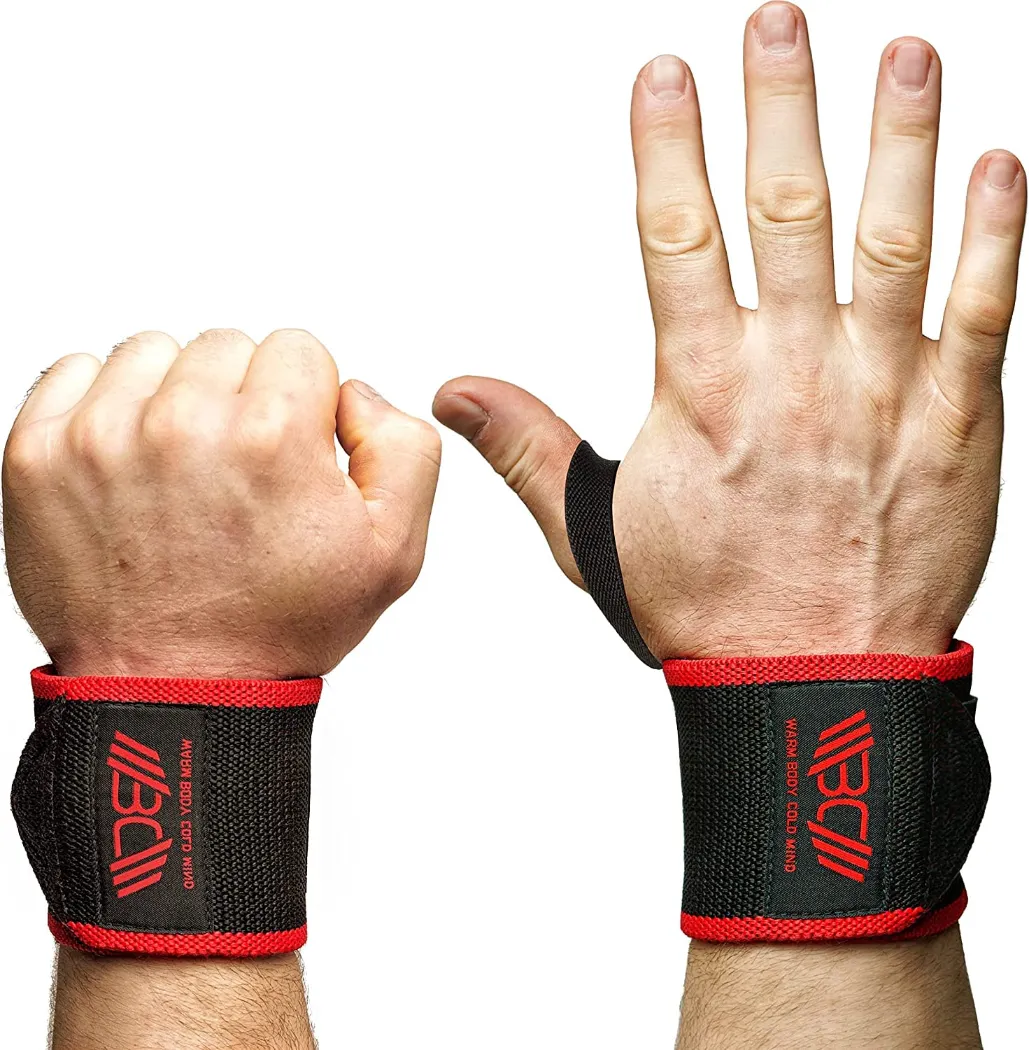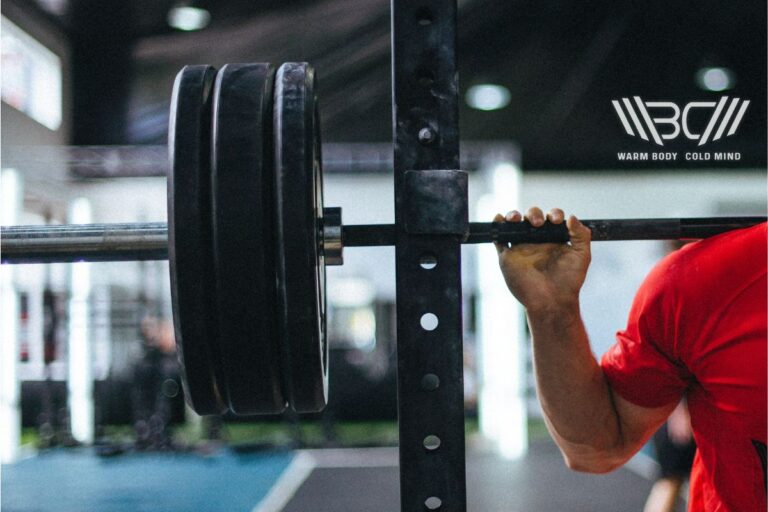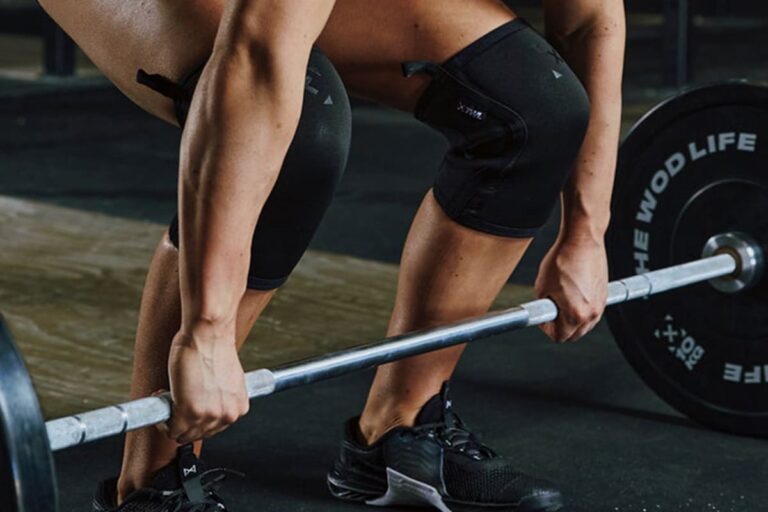How Long Should Wrist Wraps Be? Is 12″ Enough?
Wrist wraps are used during heavy lifting to provide structural support to the wrist joint. However, choosing the proper wrist wrap length can be the difference between them working or just getting in your way. So, how long should wrist wraps be based on your wrist structure? Here’s a quick answer before we do a deeper dive.
How Long Should Wrist Wraps Be? – The common wrist wrap sizes include 12, 18, 24, and over 24 inches, typically labeled short, medium, long, and extra long. The correct wrist wrap length for weightlifting is one you can comfortably wrap between 2-4 times based on your wrist circumference.
When Should Wrist Wraps Be Used?
Regardless of your raw strength, whether you can safely and comfortably press a weight amount often comes down to wrist integrity. Wrists are a complex and delicate structure that unavoidably gets weaker as we age. A common cause of weightlifting injury is simply overbearing the wrist structure, causing it to fail.
Some examples include wrist fractures, tendon pulls, and ligament strains. Wrist wraps are employed for their ability to tightly wrap around the wrist, creating a sleeve that holds everything together and reinforcing its structure.

Exercises (or simply everyday movements) that benefit the most from these reinforcements include tasks that require us to balance or push an object with our hands. Popular exercises where wrist wraps prove beneficial include the bench press, overhead press, clean and jerk, but also things like triceps skull crushers, push-ups, or even planks.
3 Benefits Of Using Wrist Wraps
So, now that we know a bit about wrist wraps, let’s find out how they work and what they do for us:
✅ Providing Structural Support
As briefly touched upon in the introduction, wrist wraps essentially work by binding up the wrist together, providing external support to the joint and surrounding muscles. By creating a tight fit around the wrist, we minimize movement that happens inside.

Secure your performance with our Velcro wrist wraps – the perfect blend of support and flexibility.
Crucially, this prevents connective parts and tissue like small bones, ligaments, and tendons from moving too far out of place, thus increasing the risk of the wrist structure collapsing and us being unable to support the weight.
✅ Preventing Injuries
Joints are the most common place of injury among weightlifters, with wrists proving especially problematic. Between the bones, tendons, ligaments, nerves, and blood vessels, many things can go wrong. Sprains and strains are especially common when the wrist structure collapses. When this happens, you’re looking at a few days without training at best, and months of recovery or even surgery at worst.

Fractures are also a concern due to the weight pushing directly onto the wrist bones during exercises like bench presses. The two main bones that make up a human forearm are the Radius and Ulna.
According to reports, the most common upper body fracture occurs in the Distal Radius, which is the portion of the Radial bone connected to the wrist. Luckily, by reinforcing wrist structure using wrist wraps, we minimize the risk of these issues.
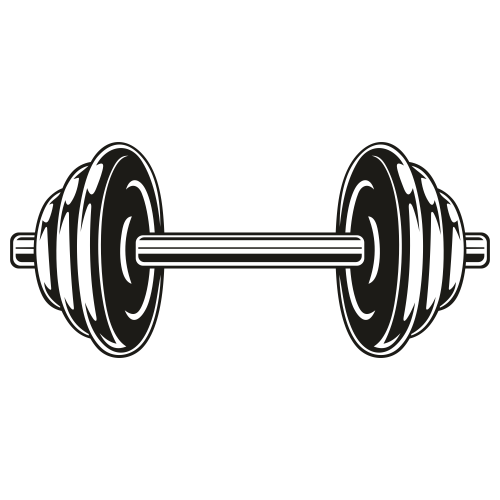
Pro Tip:
Save your wrist wraps for handling challenging weight. They don’t provide much use if you’re training with weight well within your limits that doesn’t press your wrist.
✅ Possible Lift More Weight
Unfortunately for all of us, you can’t just put on wrist wraps and magically lift 10 pounds more, as per research. However, using wrist wraps could make a big enough difference that they simply unlock the strength you already have, by minimizing pain and discomfort felt and providing reassurance.
This is especially true for people who have chronic conditions, such as Carpal Tunnel Syndrome (CTS) that make exercising uncomfortable/painful.
Why Is The Correct Wrist Wrap Length Important?
Wrist wrap length is important for selecting the appropriate size of wrap for your wrist shape and size. Wrist wraps need to be long enough to wrap comfortably but not excessively long to leave a bulk of excess material. Wraps that are too short won’t provide enough support when wrapped around, while wraps that are too long can be excessively tight, leading to interference with blood flow and wrist movement.
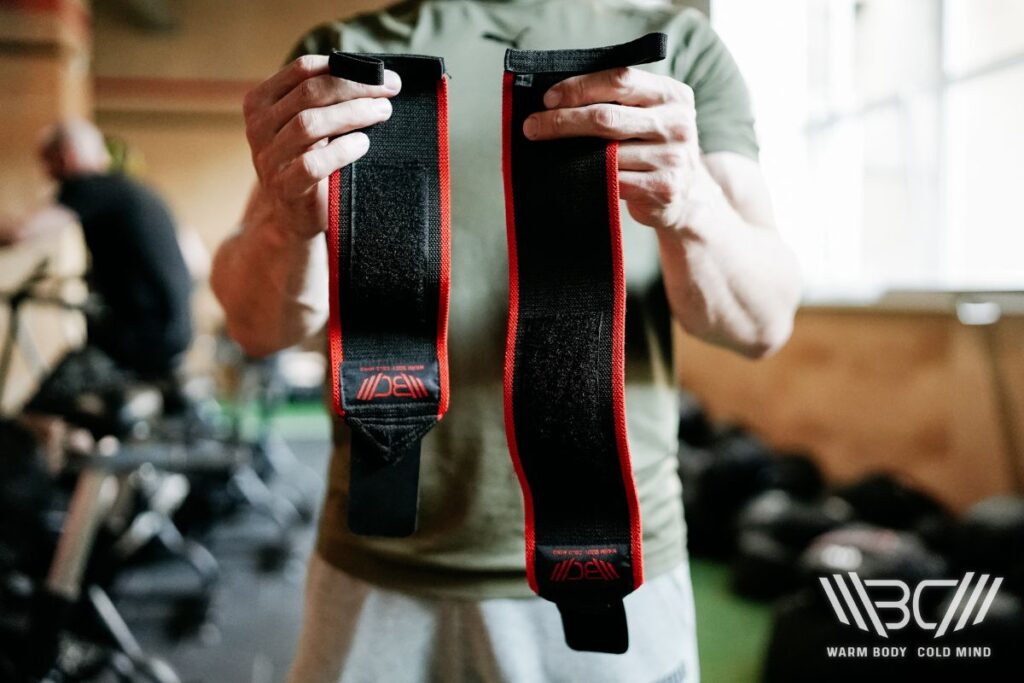
The ideal hand wrap length should be enough to comfortably encircle your wrist at least two but no more than four times. Why no less than two times? Less than that would not be wrapped tightly enough to provide wrist support and stay on comfortably.
A single wrap-around can be hard to keep in place and might unwrap mid-exercise. We took this tip from medical professionals, where bandages are wrapped at least twice for security, but no more to keep blood and air flow at optimal levels.
Why no more than four times? Speaking from experience, four is good enough to provide a tight fit without fear of unwrapping, while also not encroaching on wrist mobility. There are some exceptions with very heavy powerlifters or strongmen, for example, who might want at least six wraparounds. But for the average person, 3-4 is a sweet spot for tightness and security.
4 Main Types Of Wrist Band Lengths
One of the most frequently asked questions that hits our inbox is: What size wrist wraps should I get? The answer depends on your wrist size as well as the types of activities you’re going to use them for. Here are some pointers before we get into the common commercially available wrist wrap sizes.
Wrist size varies from person to person. Generally speaking, men are larger in proportions than women and have denser bone mass and skeletal size even when similar in proportions. This carries over to average wrist size, where women typically fall between 5.5 and 6 inches, while men range from 6 to 7 inches. Now we can better understand the hand wrap size chart.

1. 12 Inch Wrist Wraps
12-inch, or roughly 30cm wrist wraps are the shortest commercial hand wrap length. They’re commonly labeled as small or simply S. They fit best on athletes of smaller proportions with a wrist circumference under six inches to ensure at least two comfortable wraparounds. This makes them a common choice for female lifters, for example.

Cotton Weightlifting Wrist Wraps
Discover unparalleled wrist support with Warm Body Cold Mind cotton wrist wraps.
For the average person, they can’t provide as much pressure on the joint necessary for improving structural integrity on larger wrists. So, you might not feel a difference with them when attempting heavier lifts. Some situations when you might use them include lighter dumbbell presses, medicine ball throws/catches, and push-ups. They’re also okay for something like basketball or tennis.

Pros
- Quick and easy to wrap
- Won’t limit wrist dexterity
- Pocket-sized, can be carried around easily
Cons
- Not long enough for many people
- Not as supportive when it comes to heavy lifts
2. 18 Inch Wrist Wraps
18-inch, or roughly 45cm wrist wraps are average in terms of wrist wrap sizes. Commonly referred to as medium or simply M, they provide enough material for comfortable 2-3 wraps on the average wrist. These will be the choice for most people, regardless of the sport or exercise performed.

Pros
- Fit a majority of people
- A happy medium between comfort and support
- Easily the most versatile
Cons
- None worth noting if the sizing fits
Our Recommended 12” & 18” Wrist Wrap Variations – Warm Body Cold Mind Elastic Velcro Wrist Wraps
If your ideal wrist wrap length falls between 12 and 18 inches, we suggest our elastic velcro wrist wraps. Warm Body Cold Mind products are built from decades of weightlifting experience.

The wraps are made from heavy-duty cotton, with reinforced stitching and major pressure points, these are as comfortable as they are durable. The large velcro provides enough room to find a desired fit, while the addition of the thumb loop prevents them from sliding up and down.
3. 24 Inch Wrist Wraps
Next up we have 24-inch wrist wraps, commonly labeled large or simply L size. Most male weightlifters find success with either these or the 18-inch variant, though they may be a bit large for the average female wrist circumference.
With these, you should be able to comfortably wrap them up to four times and use them for heavier lifts and personal record attempts. Powerlifters and bodybuilders will find the most success with them.
Pros
- Comfortably wrap up to four times
- Highly supportive
- Fit a large number of people
Cons
- Not everyone makes use of the full four wraps
4. Above 24 Inch Wrist Wraps
There are also wrist wraps longer than 24 inches, the most common commercial variant being 30” or around 75cm. They’re particularly good for weightlifters and powerlifters or larger proportions, but also for athletes in more specialized disciplines that push around a lot of weight. For example. Strongmen, rock throwers, and boulder pushers, and similar.
Pros
- Capable of wrapping 4 or more times
- Unmatched support
- Great for larger people
Cons
- Limited users
- Can get bulky
Our Recommended 30-inch Wrist Wraps – Warm Body Cold Mind Cotton Weightlifting Wrist Wraps
For athletes looking at longer wrist wraps, we recommend our 30-inch cotton weightlifting wrist wraps. Made from 100% natural cotton and fully stitched around the edges to prevent tearing. Usage is simple: wrap the full length around the wrist, then use the cotton string to further adjust the tightness.
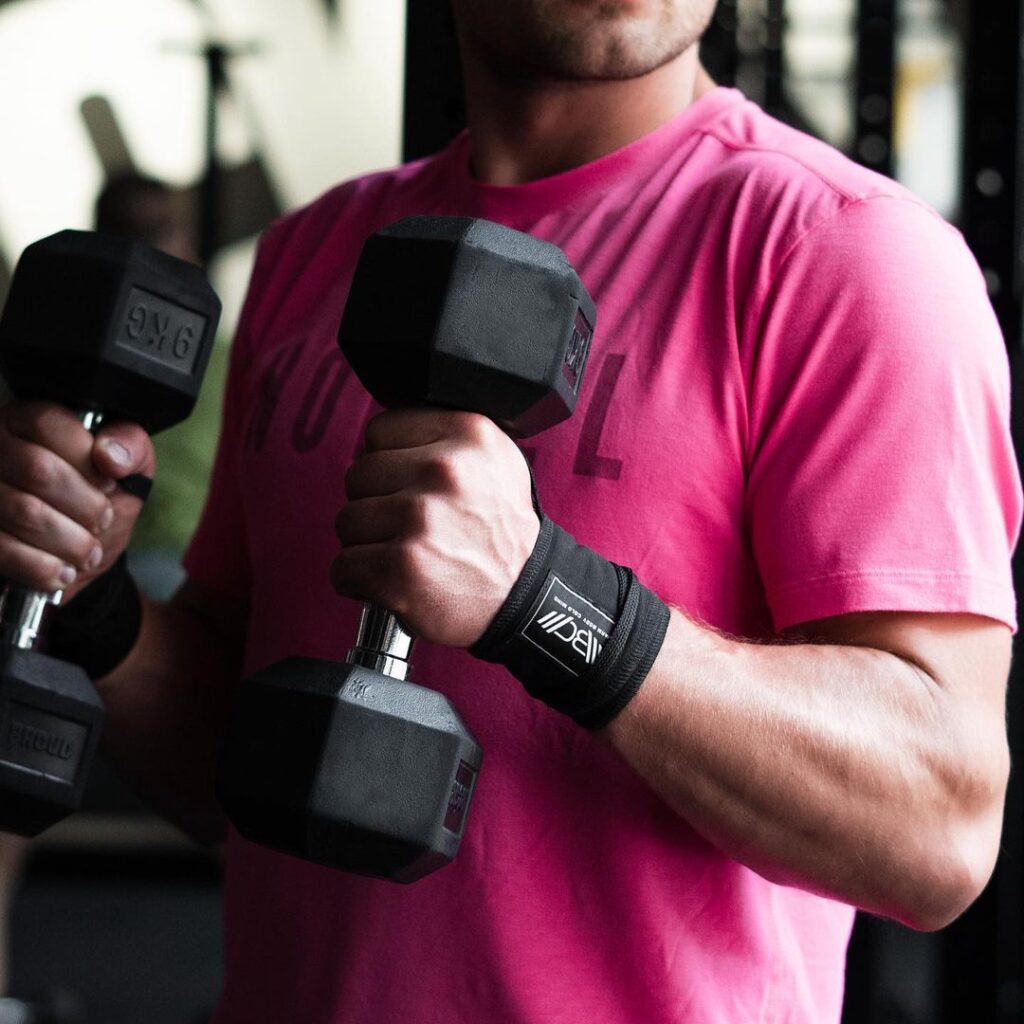
Once you’re happy with the fit, tuck the string in to secure it. The thumb loop is there to secure the fit and prevent it from slipping up and down the hand. They come in six design choices for look customization and we priced them competitively to provide the most value for money.
How Do I Know What Length Wrist Wraps To Get?
So, now you know everything there is to know about wrist wraps. Now you’re asking yourself: what size wrist wraps should I get? Here’s a simple two-point answer:
1. Wrist Circumference
Step one for figuring out hand wrap length is simply measuring the circumference of your wrist. This doesn’t have to be complicated — simply grab a tape measurer and encircle it around the wrist. Not that wrist wraps are meant to fit tight, but not too tight.
So, if you’re confused between sizes, it might be best to choose the smaller one, cotton is stretchable enough to compensate for minor differences. From there, consider the hand wrap size chart and choose ones that will comfortably wrap between two and four times around your wrist, depending on your personal preference and exercise choices.

2. Intended Use
As mentioned when explaining wrist wrap sizes, different wraps are better for different types of people and different activities. A generally good rule to follow is getting straps at least long enough to wrap twice for lighter exercises, three to four times for weightlifting and powerlifting, and above that for specialized heavy lifting.

Pro Tip:
Wrist wraps are not just for weightlifters. If you have outstanding wrist issues that cause discomfort during daily life activities, feel free to use them. This includes handling heavy objects, pushing around furniture, working on your car, etc.
Of course, medical conditions or injuries can also be a factor. If there’s an outstanding reason why you might feel wrist pain and insecurity during a lift and want added support, by all means, choose a longer wrist wrap length if it feels more comfortable. After all, health and safety are more important than optics.

FAQ
What Is The Best Length Wrist Wrap For Powerlifting?
Most people will find that 18 or 24-inch wrist wraps suit them best for powerlifting. Ideally, they should be long enough to comfortably wrap about 3-4 times around the wrist.
Are Longer Wrist Wraps Better?
Longer wrist wraps will provide you with more material to work with, allowing you to create a tighter and more structurally secured wrap. However, calling them better or worse is wrong, since not everyone desires this effect specifically.
Are Wrist Wraps Supposed To Be Tight?
Yes, wrist wraps should feel tight. They should be tight enough that you can “feel” them holding your wrist structure in place. However, the exact tightness is a matter of preference. A tighter fit will provide more support, but can also limit your wrist flexibility and isn’t always necessary.
Conclusion
So, how long should wrist wraps be? If we had to give a simple, summarized answer, a wrist wrap should be long enough that you can comfortably and tightly wrap it at least two to four times around your wrist. A tight-fitting wrist wrap can provide valuable structure support to your wrist during heavy lifts, helping to stabilize it and preventing injuries and/or minimizing the effects of existing wrist issues.
We’d love to hear from you as well. What are your favorite push-based exercises and do you use wrist wraps for them? Let us know by leaving a comment and remember to follow us on social media platforms if you like this type of content.
Also read:
References:
- “Calculating Body Frame Size,” Medline Plus, https://medlineplus.gov/ency/imagepages/17182.htm (accessed February 19, 2024).
- Jeri W. Nieves, Carmelo Formica, Jamie Ruffing, Marsha Zion, Patricia Garrett, Robert Lindsay, Felicia Cosman, “Males have larger skeletal size and bone mass than females, despite comparable body size,” Journal of Bone and Mineral Research vol. 20, no. 3 (2005), 529-535.
- John Karl, Patrick Olson, Melvin Rosenwasser, “The Epidemiology of Upper Extremity Fractures in the United States, 2009,” Journal of Orthopaedic Trauma vol. 29, no. 8 (2015), 242-244.
- “How do I apply a bandage,” National Health Service UK https://www.nhs.uk/common-health-questions/accidents-first-aid-and-treatments/how-do-i-apply-a-bandage/ (accessed Feb. 19, 2024).
- “Radius”, Physiopedia https://www.physio-pedia.com/Radius (accessed Feb. 19, 2024).
- Renan Lyuji Takemura, Carla Calviente Ortolani, Mateus Saito, Ricardo Boso Escudero, João Carlos Nakamoto, Luiz Sorrenti, “EFFECT OF WRIST WRAP IN HANDGRIP STRENGTH,” Acta Ortopédica Brasileira vol. 31, no. 3 (2023), e266236.
- “Ulna”, Physiopedia https://www.physio-pedia.com/Ulna (accessed Feb. 19, 2024).
- Ulrika Aasa, Ivar Svartholm, Fredrik Andersson, Lars Berglund, “Injuries among weightlifters and powerlifters: a systematic review,” British Journal of Sports Medicine vol. 51, no. 4 (2017), 211-219.
- All photos are made by WBCM Media team.
Author: Jason Li
Personal Coach | Functional Range Conditioning Mobility Specialist
Jason is an NYC personal training expert and National level Olympic Weightlifting Coach with over 10 years of experience training everyday clients to high levels of performance. He has trained everyone from youth (13 years old and under) to masters (60+ years old) to regional and national rankings for powerlifting, Olympic Weightlifting, Short distance (up to 200m) sprinting, discus & hammer throwing.


